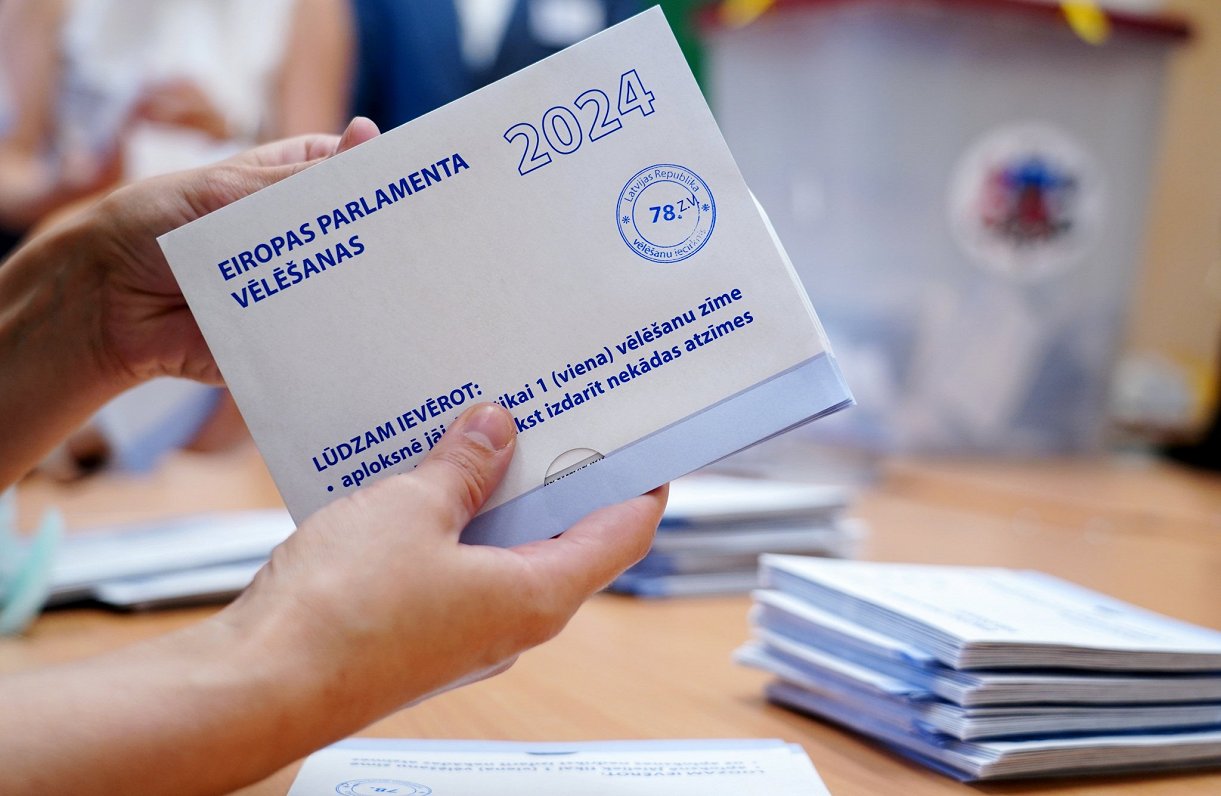In the early voting, 126 615 voters, or 8.22%, cast their ballots on Monday, Thursday and Friday. Another 2,320 voters, or 0.15%, cast their ballot at their location (at home or a health establishment or care center).
On Saturday, 385,865 voters, or 25.04%, voted at polling stations and 6,949 voters, or 0.42%, voted at their location, according to the Central Election Commission's data on turnout at 999 out of 999 polling stations.
The highest turnout was in Vidzeme constituency - 44.44%, followed by Kurzeme - 38.00%. 38.04% voted in Zemgale District, 26.70% in Rīga constituency and 24.9% in Latgale.
The largest number of voters in Saulkrasti municipality, 73.9%, and the lowest number in Daugavpils, 20.76%.
Turnout in Estonia was higher than in Latvia, while in Lithuania it was the lowest among the Baltic States. The European Parliament elects 11 MEPs from Lithuania, 9 from Latvia, and 7 from Estonia.
Estonia's seven seats are divided between five parties, according to Estonian public media ERR: the Social Democrats and the national-conservative Isamaa party each won two seats, while the ruling Reform Party, the opposition Center Party and the right-wing populist EKRE party each won one seat.
The Social Democrat Marina Kaljuranda, who has been an MEP before, received the most votes. Former Estonian Prime Minister Jiri Ratas and former Tallinn Mayor Mikhail Kelvarts will also be able to go to Brussels.
In Lithuania, eight lists will share the 11 seats. The ruling Lithuanian Christian Democrats, from which former Prime Minister Andrius Kubilius was re-elected to the European Parliament, has won the most seats (three).
The Social Democrats in opposition will send two MEPs to Brussels.
Six parties have won one seat each: the Lithuanian Farmers and Greens Union the Freedom Party, the Democratic Union "For Lithuania", the Union of Poles, the People and Justice Union, and the Liberals' Movement.
33.82% of the eligible population voted in Latvia this time, slightly more than in the previous EP elections in 2019. In Estonia, 37.7% of the eligible population voted this time, compared to 37.6% five years ago. In Estonia, voters also have the option to vote electronically, which was used by a large share of voters (more than 40%).
In Lithuania, low turnout was already predicted before the elections and these fears have come true. Only 28.34% of the eligible population voted in the EP elections this time: 20.93% on polling day and 7.41% in the advance vote.
In the 2019 EP elections, turnout in Lithuania was much higher: 53.4%. However, it should be noted that the EP elections then took place at the same time as the second round of the Lithuanian presidential elections.





























